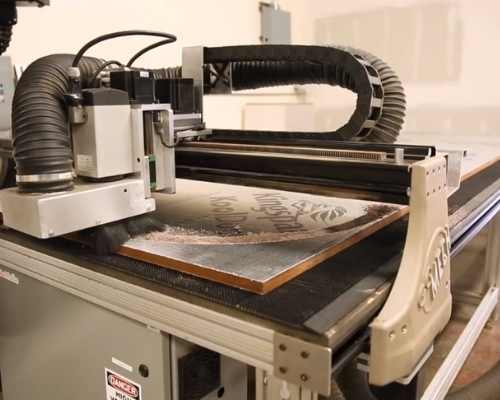4 Minute Read
January 9, 2017
0%
Technology will play a major role in all facets of construction industry growth
Trends know no decade markers, but as we transition into 2020 and look at the trending issues, there are clear opportunities for contractors to increase their construction intelligence, boost productivity and achieve greater profitability. Understanding the direction of the industry and how to best stay ahead of business roadblocks can help construction firms effectively scale for the next decade and beyond.
With that in mind, here are five key trends to watch for 2020 and beyond:

As projects become larger and more complex, the need to better leverage data has become a priority. The time is ripe for the industry’s data transformation. We’ve already seen contractors have success with employing stronger data practices and data-streamlining solutions throughout their organizations. As more and more contractors continue to modernize operations by adding cloud-based, integrated construction software, they’re opening the door to leverage the latest technologies to do more with the mountains of data they collect. The combination of powerful analytics tools with cloud accessibility and mobile connectivity are the ideal ingredients for data transformation, giving contractors the tools to make smarter, real-time decisions and automate workflows and processes. These data analytic tools are also helping contractors become more predictive and prescriptive as they can help spot trends and better forecast how future project performance, identify risks ahead of time and set and achieve stronger, clearer benchmarks

The industry has been touting stronger safety measures and best practices for years now, but expect some additional attention safety and perhaps even some key initiatives related to this in the political arenas in 2020. There have been several major construction-related accidents and tragedies over the past two years alone. Among these: the Florida International University pedestrian bridge collapse, the collapse of the under-construction Hard Rock Hotel in New Orleans and deadly crane collapses from Seattle to Dallas. In the wake of these incidents, the construction industry and contractors’ safety practices are under a microscope. New York City, as an example, recently began random, surprise safety inspections across projects in all boroughs — the first wave of which resulted in nearly 11,500 violations on jobsites. A lot of safety incidents can be prevented with real-time project information, tech-aided safety gear and streamlined workflows provided through cloud-based software and data analytics that can spot safety issues and better plan ahead to thwart them. And developing technologies like robotics, machine learning and prefabrication of parts of construction projects in house are all removing human hands from dangerous situations.

The labor shortage in the construction industry continues to be an issue — and one that isn’t going away any time soon. Even as construction firms across the nation fight to keep up with project demands and work backlogs while employing a shrinking workforce, they must attract — and retain — young, talented professionals who can grow with companies and bring construction firms into new areas of business. Technology will play a key role in developing construction’s workforce of tomorrow. Younger generations of working professionals are much more in tune with technology and contractors that have modernized their own operations to keep pace with the current pace of business worldwide are largely realizing the benefits. Offering career paths and working environments that include state-of-the-art technologies like drones and augmented reality solutions, cloud-based integrated construction software with advanced data analytics and business intelligence, and encouraging innovation and forward-thinking ideas are important incentives for younger, tech-savvy workers. We can also expect to see a growing push for more educational programs, apprenticeships, trade schools and construction courses. Many of these programs have been underfunded or replaced in recent years, road-blocking contractors’ access to once-thriving talent pools.

In case you were unaware, 2020 is an election year. What has become one of the most divided political landscapes in recent memory will continue to play prominently in the public realm. Politics, though, isn’t just about voting individuals into offices, but also about legislation that could impact the construction industry and economic stability. Will the country slide into another economic recession as many experts have predicted? Will tariff changes and potential trade wars wreak havoc on project and material costs? Will a comprehensive federal infrastructure measure ever be passed? What can voter-approved state initiatives do to government funding for transportation and construction projects on local or regional levels? The only thing that seems certain is continued uncertainty — at least in the short term. Contractors too, appear split on how to best prepare for business shifts. Some are building up cash reserves to help sustain regular operations should any downturn occur. Others are modernizing their operations now by implementing the latest technologies and leading-edge software to gain efficiencies now, and better scale for future growth. While any planning ahead is sound (as well as a luxury many contractors didn’t have ahead of the mid-2000s recession), odds are that the companies investing now will be better positioned to compete in the long run, ultimately securing better longevity.

From bridges and roadways to hotel rooms to downtown high-rises, the continued shift toward modular and prefabricated construction has touched nearly every sector of the construction business. It’s been long understood that unlike manufacturing where assembly-line approaches to workflows exist, construction is a different beast. No two projects, work environments or workflows are exactly alike and work, project teams, equipment, materials, data and more can vary wildly. Prefabrication, however, allows contractors more control by implementing uniform processes to parts of the project that can be standardized, like assembling parts of materials in a warehouse rather than on a rainy jobsite. The modular and prefabricated strategy mitigates on-site variables of weather, traffic, terrain, theft and more while moving the work into a controlled environment connected to technology, material sourcing and project data. As modularization continues to advance, this is another area ripe for future technology innovation and application.
Want more information on how technology is shaping the future of construction? Read more about how ViewpointOne helps each different construction persona work smarter. Or, connect with Viewpoint today to see first-hand how we could help your organization scale for today, tomorrow and beyond.
4 Minute Read
January 9, 2017
6 Minute Read
January 8, 2019